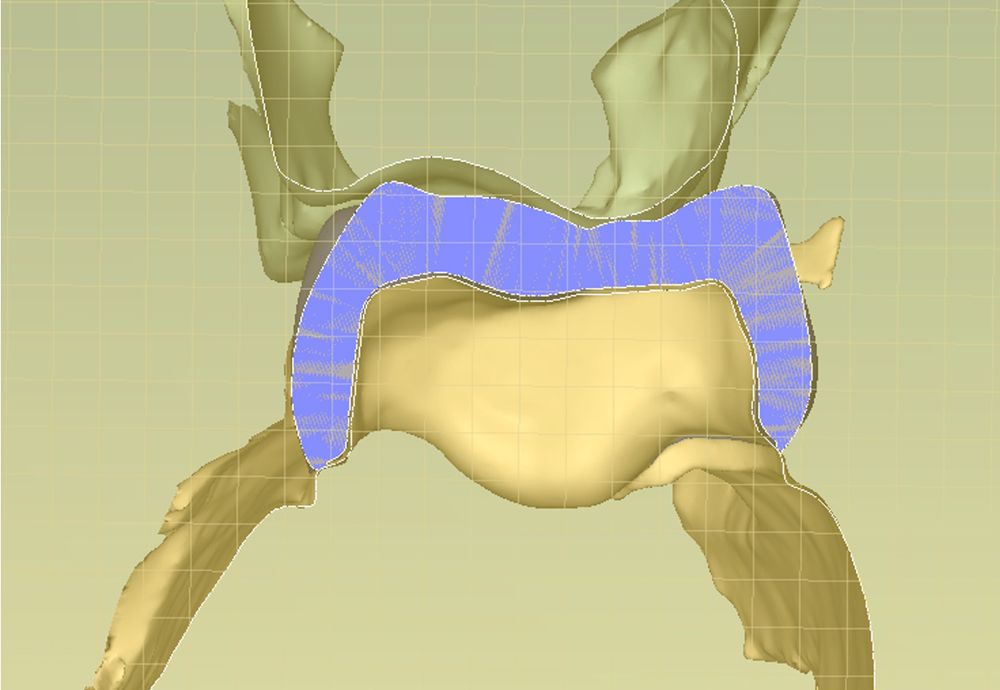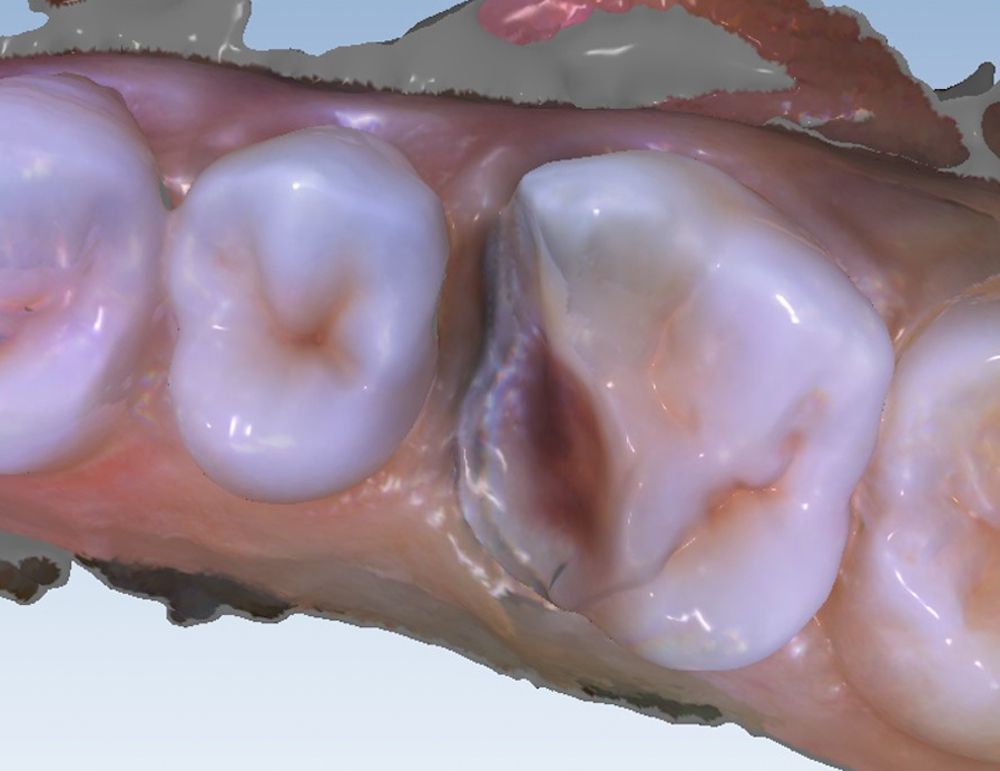Advertorial: Opportunities Are Endless With Digital Dentistry
Here’s an Inside Look at How Chairside CAD/CAM Allows You to Take Back Control of Your Practice and the Patient Experience.

There are many factors that come into play before a dental practice makes a large investment on technologies such as chairside milling or other digital dentistry workflow components. One key factor is knowing exactly what the practice expects to get out of these technologies and how it plans to implement them. Another obvious component for all businesses’ endeavors is return on investment.
There are many resources to calculate return on investment (ROI) and help practice owners gauge how new technologies can increase revenues. But Clint Stevens, DDS, of Downtown Tulsa Dental in Oklahoma, adopted CAD/CAM dentistry long before today’s metrics on ROI existed. He made this early shift to digital dentistry because he believed it was the best, most efficient way to deliver great care to his patients.
Sure, there were some large costs early on. But he trusted that the technology would better his treatments, improve workflows, and eventually deliver more than enough ROI to validate his decisions. Dr Stevens practices full time but also is engaged in ongoing laboratory and clinical research dealing with digital dentistry, adhesive restorative materials, endodontics, and dental implants.
Here he explains why he made the jump to digital dentistry 15 years ago, how it’s paying off for him, and why other clinicians should consider using digital scanners, chairside milling units, and the best available digital imaging systems.
“The very same things that motivated me to digitize my practice 15 years ago now are some of the very same things that will likely motivate you to digitize your practice even though on the surface it looks differently,” says Dr Stevens. “But the first thing I think we need to do is look at the evolution of digital dentistry. There’s been a lot of change in the past decade or so that really has changed the breadth and the scope of what one can do digitally. This is where as a profession we need to step back and refresh our perspective about what the term digital dentistry even means.”
Digital Dentistry
For a long time, most dentists thought of digital solutions as just replacement solutions. They were swapping out sensors for film or swapping out impression material for a scanner. But when Dr Stevens started using a full chairside CAD/CAM solution, he anticipated a dramatic change in his workflow, only to be pleasantly surprised when the workflow remained nearly the same.
Implant restorations today can be milled with great results.

“It really didn’t change how I did it [restorative dentistry], other than I was manufacturing it in-house instead of having it done by a lab,” he explains.
Many years ago, Dr Stevens was considered an early adopter of CAD/CAM technology. It pushed him and his fellow trail blazers to implement changes in their workflow and materials, but today’s systems are much easier to use as well as being easier on the wallet.
Clinicians today can reap the benefits of having dentists like Dr Stevens help manufacturers develop better and more intuitive equipment. ROI is faster and implementation is much smoother.
“For a lot of people, it [digital technology] wasn’t what they wanted to do at that time, and it was a limited technology that didn’t connect or integrate with anything else in the office,” he says. “So while it was great for some, it could become just a nice decoration in the corner of the room for those who weren’t able to adapt the technology to their liking.”
Great Dividends
Although his motivations are the same, a lot has changed in recent years in terms of technology, materials, techniques and patient expectations. Taking full advantage of the offerings from Planmeca USA, Dr Stevens believes he’s giving his patients what they want: great results and the option of single-visit dentistry. On top of that, digital dentistry is doing great things for Downtown Tulsa Dental’s business.
Digital impressions can have a powerful impact on your dentistry.

The Planmeca Emerald S intraoral scanner is a vital component in the practice’s workflow. It features redesigned scanning software, can produce fast quadrant or full arch scans in 60 seconds or less, and is highly accurate for use with aligners, appliances, and more.
For chairside milling, the company offers both the Planmeca PlanMill® 35 and Planmeca PlanMill® 50 S units. The PlanMill 35 is a cost-effective dental mill for high-quality restorations. It features an automated changer for 5 tools and can do both wet and dry milling. The larger PlanMill 50 S unit is a powerful 5-axis milling unit for wet and dry milling of discs and blocks. This robust unit has an automatic changer for 12 tools and can fabricate anything from a single crown to dentures and night guards. The capabilities are endless.
Regardless of which mill you choose, chairside CAD/CAM milling in-house almost eliminates lab bills. For example, doctors who have the PlanMill 50 S can mill a crown for about $7.00. There are additional benefits that pay dividends. For example, if you can complete a patient’s treatment in a single appointment, you save on costs associated with preparing the operatory for the next patient and you reduce your consumable material usage too.
“Reducing visits also increases your hourly rate. All of a sudden you’re improving your cash flow and your capabilities — especially when you’re doing same-day dentistry,” Dr Stevens says.
“Insurance is billed the same visit and there is no confusion with your front desk on the next appointment. They collect the patient’s portion due, and the patient is happy knowing they don’t have to come back for a second or third visit. Everything is easy and painless for everyone,” Dr Stevens says.
Even Greater Strides
Digital dentistry means different things to different people—but everyone will get greatly improved data and diagnostic capabilities. Dentists are not only changing the how but also the what in the way they perform clinically.
“There are significant changes to mention when we’re talking about this pretty huge paradigm shift in our profession,” Dr Stevens says. “The first change is digital data. Because at the end of the day, digital data leads to better diagnostics and better solutions for patients.”
Today’s digital technologies are being used more than ever in dentistry including innovations that are being implemented in orthodontics and implants.
With digital impressions clinicians can receive far superior visualization than
loops magnification or looking at a conventional impression.

“We already have a lot of data showing that these technologies can provide as good or a better outcome for fixed prosthodontics than analog impressions. And it’s not just for crowns anymore, but it’s for everything,” he says. “Just like everything else in our lives, our profession is rapidly digitizing. We’re no longer talking about digital solutions being replacement solutions for analog equivalents, but rather we’re starting to move into a time where digital is the solution and it is actually making analog solutions obsolete.”
Easy Implementation
When you’re looking to implement digital technologies in your office, it is likely that you will be delegating the operation and daily use to a staff member. Therefore it’s important to consider ease of use and ease of implementation. If technology is complicated to use or has a steep learning curve, you might not fully utilize the capabilities.
Planmeca Emerald™ S is an enhanced version of the company’s Planmeca Emerald™ scanner. It elevates intraoral scanning speeds to the next level while also introducing new diagnostic capabilities and improved usability. This intraoral scanner is easy to use and delivers precise results and a more pleasant patient experience.
In recent years intraoral scanners have become better and better. Some of the enhancements have come from hardware changes, whereas others are merely software changes.
“So overnight, unlike with PVS [polyvinyl siloxane] impression material where we probably haven’t had a significant improvement in the accuracy and precision, in more than 20 years, with intraoral scanners you can sometimes see vast improvements even overnight, with a simple software update,” Dr Stevens says. “This is really exciting because some digital scanners are only going to get better over time. In fact, Planmeca is releasing a new interchangeable tip for the Emerald S. So now, Emerald S users can add additional functionality to their scanner with the new Cariosity™ tip which detects carious lesions and fractures without radiation. The cool thing is that imaging and scanning are disruptive technologies that don’t disrupt your practice.”
Whereas implementing some of the earlier CAD/CAM systems and scanners could be quite disruptive to practices’ workflows, integrating today’s technology can be a seamless transition.
“Today if we’re talking about just intraoral scanners, which any practice would benefit from having, they don’t have to disrupt the practice or how the practice works,” he says. “The great thing about digital impressions is that for quadrant dentistry, which a lot of us are doing a majority of the time, you can retake these impressions much faster than conventional impressions.”
Again, the better the technology gets, the better the care delivered to patients. Digital data doesn’t degrade and is easily stored and shared. This means patient communication and clinician-to-lab communication have dramatically improved, resulting in better diagnosis, preparations, and outcomes.
“You can keep digital data forever,” he says. “Also, the laboratory can get [the data] instantaneously to work on.”
Additionally, when scanning your dentistry you can take a 2D snapshot with the scanner and enlarge it to better visualize your prep or your dentistry and you’re going to get a better outcome. “You’re going to avoid those ‘make it work’ scenarios because you get an immediate feedback for your prep, which leads to a better preparation and better long-term prognosis for that restoration,” Dr Stevens says, “and clinicians are excited about the fact that the technology today is just really darn good.”
Chairside Milling
Today’s chairside milling units such as the Planmeca PlanMill 50 S take advantage of material advances to play a bigger role in digital dentistry practices. Great strides have been made since the earlier machines that only produced crowns. Now so much more can be milled chairside, including implant restorations, dentures, surgical guides, and night guards.
“Basically, everything that we do as a restorative dentist can be milled, or is preferably milled in today’s environment,” he says. “The question becomes whether you want to invest in CAD/CAM yourself and essentially bring the lab in house. It’s one thing to plug and play a scanner into your office; it’s something else when you bring in the whole system. For me, it’s a no brainer. You’re going to get better, more efficient outcomes for your patients and patients are going to like it better.”
The message is get a scanner if nothing else, he explains. Maybe the clinician likes their lab, or they don’t want to take on the fabrication portion at this time. But for those who want to experience tremendous lab savings, a full system is the way to go. You’re going to practically eliminate lab fees, complete procedures in a single visit, and make patients happier with digital dentistry.
“What I would tell you is that not going digital is going to cost you more,” Dr Stevens explains. “These workflows are just a heck of a lot more cost efficient.”